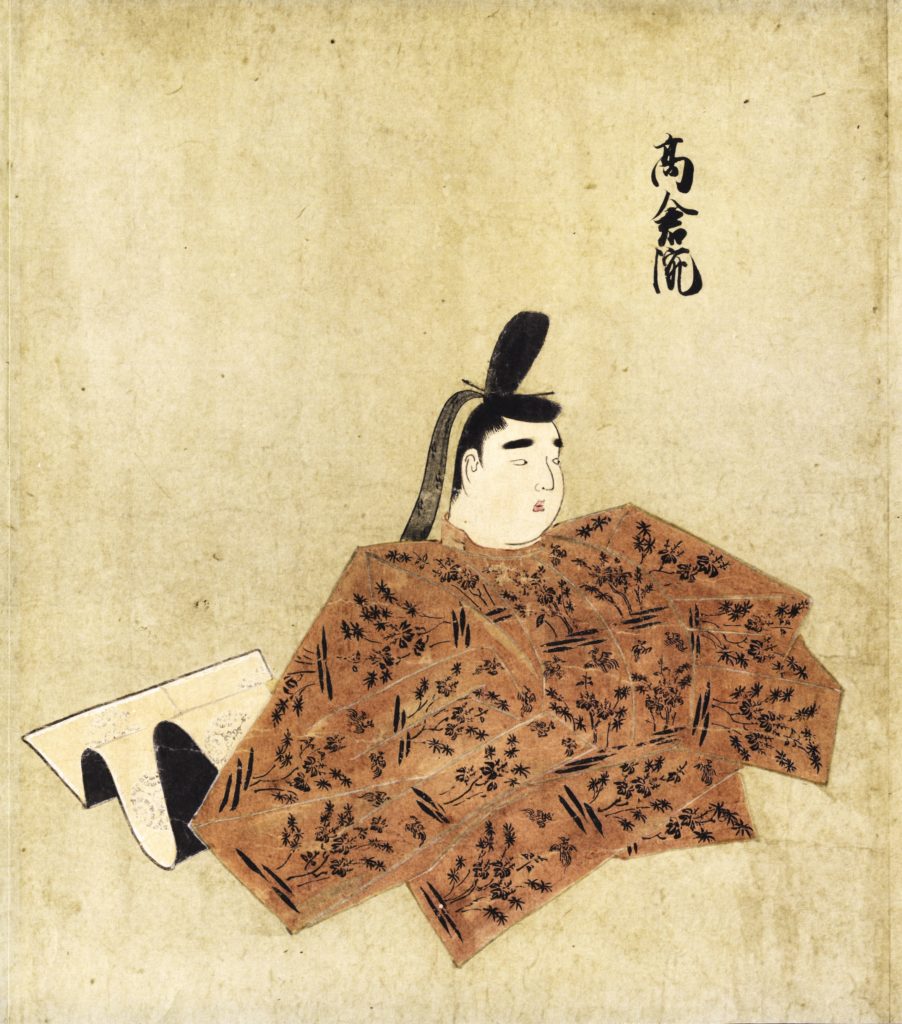
今回、ご紹介させていただきますのは、平清盛の孫にあたる『平維盛(たいらのこれもり)』です。
維盛の父は、清盛の嫡男「平重盛(たいらのしげもり)」で、父・清盛の晩年の暴走を唯一諌めることのできた人物で、清盛と後白河法皇の関係修復に努めながら、次世代の平家棟梁の役割を担っていたものの若くして亡くなりました。
維盛は、重盛の嫡男であり周りへの気遣いができる温厚な人柄で、父・重盛とよく似ていたと言われています。
しかし、そんな彼も平家のプリンスと期待されながら最期は非業の死を遂げました。
この章では、彼の生涯を深掘りしていこうと思います。
This time, I would like to introduce “Taira no Koremori,” the grandson of Taira no Kiyomori.
Taira no Shigemori, the father of Kiyomori, was the only person who was able to give up on the runaway of his father Kiyomori’s later years. Although he was in charge of the Heike, he died at a young age.
It is said that Koremori was a son of Shigemori, who was kind to his surroundings and had a gentle personality, and was very similar to his father, Shigemori.
However, although he was expected to be the Prince of the Heike, he died unemployed at the end.
In this chapter, I’ll dig deeper into his life.
平維盛とは?【What is Taira no Koremori?】
平治元年(1159年)に、平維盛は重盛の嫡男として誕生しました。
母に関しては諸説ありますが、女官という説が濃厚と言われております。
兄弟には、資盛や清経、忠房などがいます。琵琶が主人公の物語『平家物語』にも登場していますね。
次男の資盛などがやんちゃなイメージがあるのに対し、維盛は実直で父の重盛同様に責任感が強く、時には強すぎるが故に自分自身を苦しめてしまう存在として描かれることが多いです。

維盛は仁安2年(1167年)2月7日に叙爵され、美濃権守となり、嘉応元年(1169年)の正月には、従五位上に昇進します。父重盛の官位上昇に伴い、維盛も出世をしていきます。
しかし、順調かと思われた矢先、とんでもない事件が起きてしまいます…
In the first year of Heiji (1159), Taira no Koremori was born as a son of Shigemori.
There are various theories about his mother, but it is said that the theory of a lady-in-waiting is rich.
His brothers include Taira no Sukemori, Kiyotsune, and Tadafusa. Biwa also appears in the main character’s story “The Heike Story”.
While his second son, Taira no Sukemori, has a mischievous image, Koremori is straightforward and has a strong sense of responsibility like his father, Taira no Sukemori, and is often portrayed as being too strong to hurt himself. am.
Koremori was appointed to the rank of Mino on February 7, 1167, and was promoted to the fifth rank in the New Year of the first year of Kao (1169). With the rise of his father, Koremori, Koremori will continue to advance.
However, at the point where it seemed to be going well, a ridiculous incident occurred …
鹿ヶ谷の陰謀が発覚!!父の重盛も窮地に…【Shishigatani’s plot is discovered!! My father’s Shigemori is also in trouble …】
安元2年(1176年)3月、後白河法皇50歳の祝賀が行われました。平家の一門も続々と法住寺の宴に出席し、法皇との蜜月ぶりを誇示していました。
維盛も優れた笛の演奏を賞され、また美貌だったことから「光源氏の再来」と称されました。
しかし、ここで政界が動揺する出来事が多発します。
後白河法皇の妻である「建春門院(平滋子)」が亡くなり、その皇子・高倉天皇の立場が不安定なものになります。高倉天皇は平家の息がかかった天皇であるため、平家側は何としても高倉天皇を支えていかなければなりません。
後白河法皇も自身の権力を維持して院政を行いたいため、後白河院政派を積極的に取り立てます。
ここで【高倉天皇(平家側)と後白河法皇(後白河院政派)】の対立構造ができるわけです。
建春門院という平家・後白河の橋渡し役を担っていた人物が他界することにより、両者の間で不協和音が生じます。

そして、安元3年(1177年)6月、京都・東山鹿ヶ谷(現在の京都市左京区)の静賢法院(信西の子)の山荘で平家打倒の密談が行われます。
この密談には、後白河院近臣の西光・俊寛・藤原成親らが参加し、酒の勢いに任せ、瓶子(へいし=とっくり)を倒して「平氏が倒れた」と猿楽を演じて気勢をあげていたといわれています。
参加していた多田行綱は、計画が露見するのを恐れて裏切り、清盛に密告したことで発覚します。
怒り心頭の清盛は早速、加担したものを次々に処刑します。
加担した者の中に、藤原成親(ふじわらのなりちか)という人物がいました。彼の妹は何と「重盛の妻」なのです。
義理の兄が鹿ヶ谷の陰謀に関与したことにより、維盛の父・重盛は失脚してしまうのです。
何とも悲しいですよね。
この事件を期に重盛は気力を失い、政治の表舞台にはほとんど姿を見せなくなり、治承三年(1179年)に偉大な父・重盛は病死してしまいます。
そして、事態は次々に悪化の一途を辿ります。
「平家にあらずんば、人にあらず」とその栄華を称された平家の時代が終わりを告げようとしています。
次章では、「父・重盛を失った維盛のその後」についてご紹介させていただきます。
In March 1176, the 50-year-old celebration of Emperor Go-Shirakawa was held. The Heike family also attended the Hoju-ji banquet one after another, showing off their honeymoon with the Pope.
Koremori was also praised for his excellent flute performance, and was called “Hikaru Genji’s return” because he was beautiful.
However, there are many events that upset the political world here.
The wife of Go-Shirakawa, “Kenharumonin (Taira no Shigeko),” died, and the position of her prince, Emperor Takakura, became unstable. Since Emperor Takakura is the breathtaking emperor of the Heike, the Heike side must support Emperor Takakura at all costs.
In order to maintain power and carry out the cloister rule, Emperor Go-Shirakawa will actively collect the cloister rule.
This is where the confrontational structure of Emperor Takakura (Heike side) and Emperor Go-Shirakawa (Go-Shirakawa cloister rule) is created.
The death of the person who played the role of the bridge between the Heike and Go-Shirakawa, called Kenshunmonin, causes a dissonance between the two.
Then, in June 1177, a secret talk was held at the mountain cottage of the Shizuken Hoin (Shinsai no Ko) in Shishigadani, Higashiyama, Kyoto (currently Sakyo Ward, Kyoto City) to overthrow the Heike.
Saiko, Shunkan, and Fujiwara no Narichika, who are close vassals of Go-Shirakawa-in, participated in this secret talk, leaving it to the momentum of sake, defeating the heishi = Tokkuri, and playing Sarugaku saying “Mr. Taira has fallen”.
YukitsunaTada, who participated, was discovered by betraying him for fear of revealing the plan and informing Kiyomori.
Kiyomori, who is angry, immediately executes the companions one after another.
Among those who helped, there was a person named Fujiwara no Narichika. What a “Shigemori’s wife” is his sister.
His brother-in-law was involved in Shishigatani’s plot, and Koremori’s father, Shigemori, was ousted.
It’s sad, isn’t it?
During this incident, Shigemori lost his energy and almost disappeared from the front stage of politics, and his great father, Shigemori, died of illness in the third year of Jisho (1179).
And things are getting worse one after another.
The era of the Heike, who was hailed as “not in the Heike, not in the people,” is about to end.
In the next chapter, I would like to introduce “after the loss of my father, Taira no Shigemori”.




コメント